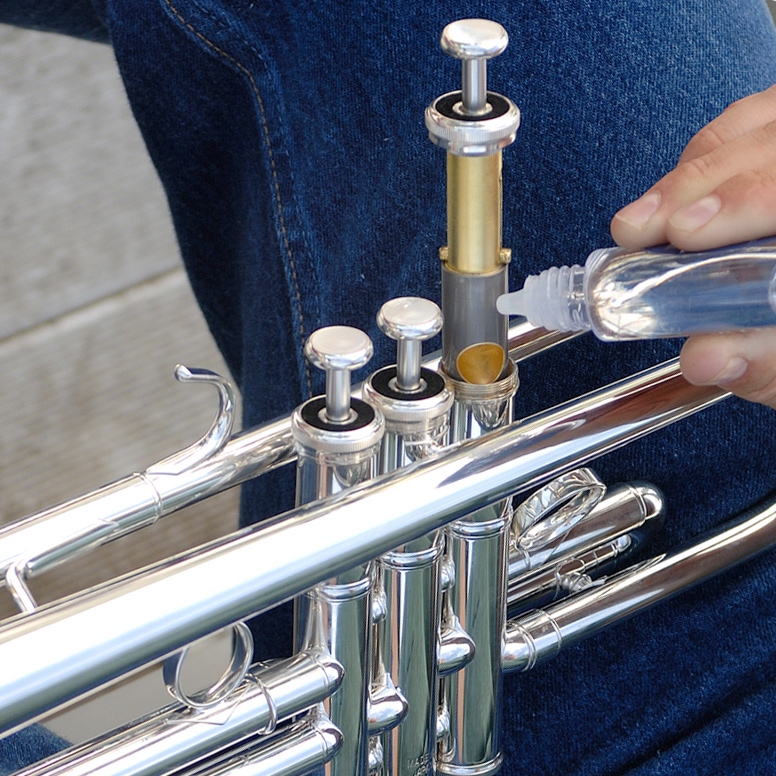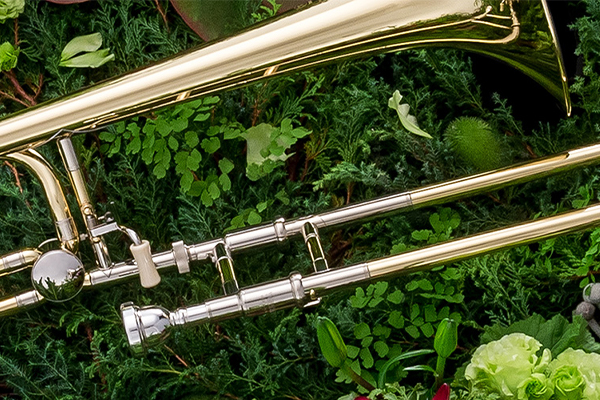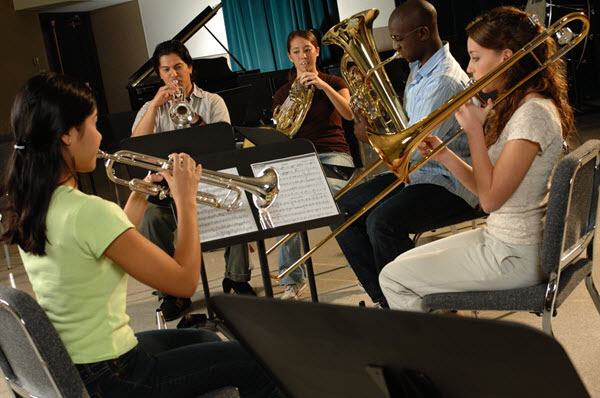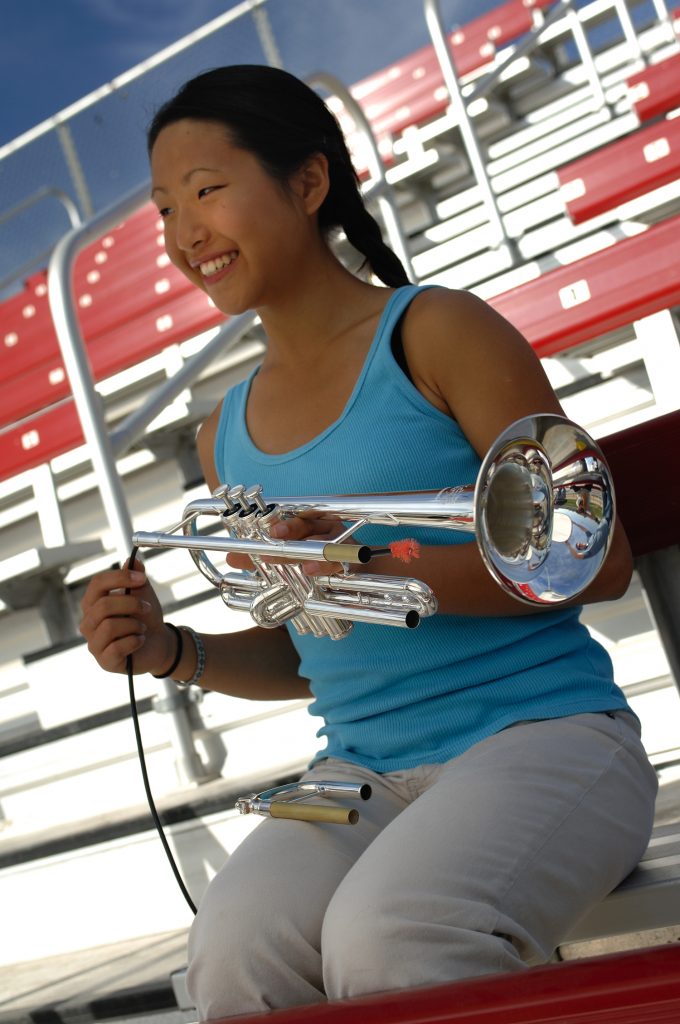How to Oil Brass Instrument Valves
It’s easy to prevent stuck valves.
It’s the night of the band concert, and the curtain will go up soon. You’re backstage bubbling with nervous excitement. Then, from the rear of the ensemble, one of your fellow trumpeters raises his hand and says, “My valves are sticky — can you help me oil them?”
This could never happen because all brass players know how to oil their valves, right? Unfortunately, all too often, this is not the case. To help clear up some of the mystery, here is the official Yamaha-approved method for oiling brass instrument piston valves.
Step 1: You’ll need both hands free, so place the instrument someplace where it can safely stay put, with the valves easily accessible. Sitting in a chair with the instrument on your lap is a good choice — if you’re worried about oil dripping on your pants, put a towel or rag underneath the instrument to catch the drips.
Step 2: Unscrew the top of the valve oil bottle and set the cap aside. It may seem silly, but it’s a lot easier to do this now rather than after the next step!

Step 3: Starting with the first valve, fully unscrew the cap at the top of the valve until it comes loose. Then use one hand to gently slide the entire piston assembly up until you can see the wide silvery-gray portion of the valve body. The piston doesn’t need to come all the way out of the instrument — as long as you can see the top of that wide area, you’ve pulled it out far enough.
CAUTION: The piston can be easily damaged if it’s dropped or banged against something, so be very careful while it’s unscrewed and exposed!
Step 4: Place several drops of oil around the top of that silvery-gray area and allow it to run down the side of the piston and into the valve casing. Don’t be afraid to use more oil than you think is necessary — any excess will drain out the bottom of the valve and will help keep the instrument clean by washing out dirt, bits of food, saliva or any other debris that may have found its way onto the valves.
Step 5: Carefully slide the piston back down into the casing, making sure that everything is still lined up the way it started. For Yamaha trumpets, you will see the valve number stamped into the metal near the top of the piston — this number should be facing toward the mouthpiece, so that if you were playing the instrument you would be able to read it. Depending on the instrument, there may also be an audible “click” as the piston guide locks into place, so listen for that click as a good sign that everything is where it should be. Once the piston is lowered all the way, screw the top cap back into place until it is tight.
Step 6: Repeat steps 3 to 5 for the rest of the valves.
Step 7: Once all the valves are back in place, work all of the pistons up and down a few times to help spread the oil around. This is also a good time to blow some air through the instrument to make sure everything was put back together correctly — do this once with all the valves open, and then again with all the valves pressed down. If the air feels blocked or restricted, go back to step 5 and re-check each valve to make sure each piston is lined up correctly.
Don’t Make These Mistakes
I’ll confess that when I first started playing a valved instrument, I developed a few bad oiling habits because no one had taught me the proper way to oil valves. The first was dripping oil down the top valve stem without unscrewing the caps. At the time, I didn’t know that there was felt underneath the stem that was absorbing all the oil, so the oil never got where it needed to go.

The second bad habit was squirting oil through the vent holes in the bottom valve caps. While some oil might have found its way to the proper place, I didn’t realize just how filthy the bottom caps can get since they’re like a lint trap collecting all the dirt and debris that drips down from the pistons. Any oil that did make it onto the piston would have picked up some of that debris and put it right back where you don’t want it.
Unscrewing the caps may seem like a complicated process, but even a beginner can learn to do this with a minimum amount of instruction and practice. My own son started playing trumpet in 6th grade, and he had no problems learning to safely oil his valves by this method. It’s also the best way to guarantee that the oil is getting right onto the sides of the piston where it will do the most good.
Spend a few minutes learning this process and you’ll have fewer stuck valves to worry about!















